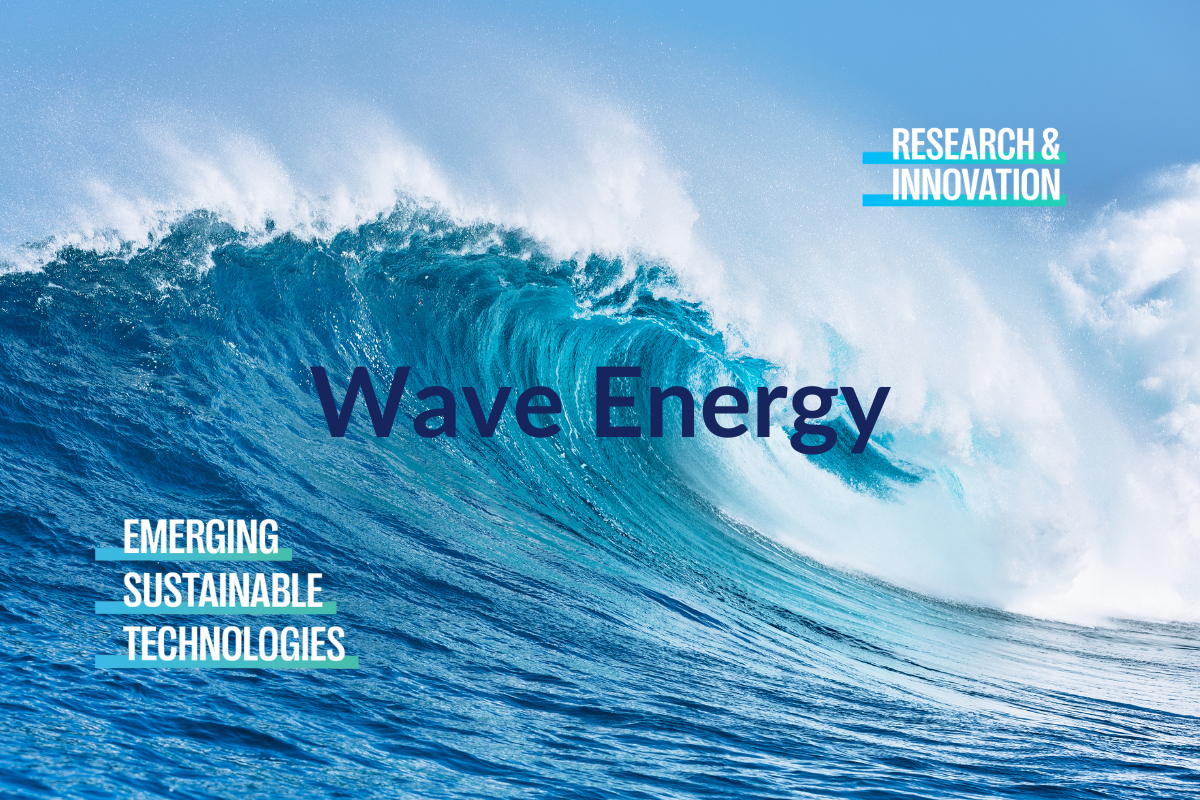


Life-cycle assessment studies support the potential of wave energy plants as alternative green energies.
In wave energy there is a great design variety with no dominant sub-technology. The 8 families of wave energy technologies range from TRL 5 to 8.
* from IRENA 2020
- Oscillating Water Column: Air is compressed and decompressed in a column because of the rise and fall of the waves inside a partially submerged, hollow structure opened to the sea below the water inlet. It is directed through a turbine to generate electricity.
- Attenuator: This device mimics the wave ondulations and can be composed of single or connected segments.
- Point Absorber: Floating or submerged device relying on the buoy’s movement induced by waves to produce energy.
- Rotating mass : A hollow device with a weighted gyroscope. As it is moved by the waves, the weight rotates and produces electricity.
- Oscillating Water Surge Converter: Submerged technology relying on the pendulum movement to capture energy in an oscillating arm.
- Submerged Pressure Differential: Pressure of waves’ ondulations triggers a differential and electricity is generated by pumps. (only attempted but not achieved)
- Overtopping: Waves are captured in a reservoir and released through a shaft, where a turbine generates energy when water passes.
- Bulge wave: Semi-submerged flexible device which relies only on the surge as it is placed parallel to the waves.
- More resistant Power Take-Off (PTOs) and components
- New designs aimed at lowering Levelised Cost of Electricity LCOE)
- New designs relying on electro-active polymers, water pendulum principle and coral reef dynamics
- New designs including a possible combination with offshore wind
+ Wave energy velocities are predictable (short/medium term) as well as abundantly available. They are less susceptible to climate change and can produce energy both day and night.
+ Wave energy has a high energy potential
+ Close to end user (about 40% of the world’s population live within 100 kilometers of the coast) and easily combinable with other offshore renewable energy sources
- Complex environment (for installation but also O&M – operation and maintenance) and current high costs due to low TRL: construction cost, O&M, and LCOE
- Components need to cope with regular waves (single frequency) and irregular waves (multiple frequency) coming from multiple directions at different times or at the same time
Very few large-scale prototypes have been tested, and even fewer at pilot farms. Therefore, existing knowledge on tidal, wave or floating wind technologies is scarce.
The construction, operation and decommissioning phases of offshore renewable energy developments exert pressure on the marine environment. Possible environmental effects of wave energy projects include: alteration of the wave patterns and currents by absorbing or reflecting wave energy, and different types of consequences for marine species.
Life-cycle assessment studies support the potential of wave energy plants as alternative green energies. Studies have shown environmental impacts would be similar to those of large wind turbine installations. Main environmental impacts from ocean energy devices from a life-cycle perspective are due to materials used, while installation, maintenance and operation do not show significant impacts.
Finally, resource management is a key issue for successful wave energy projects. Competition for marine resources is growing, and ensuring economic benefits and environmental sustainability requires improved governance frameworks, especially spatial planning to regulate competition for the best resources and improve coordination among marine activities.
USA, Europe, China, Korea & Australia are the main regions & countries investing in and exploring wave energy projects.
Read more and discover more innovative sustainable technologies, their advantages and their challenges in ENGIE’s 2024 report on Sustainable Emerging Technologies: